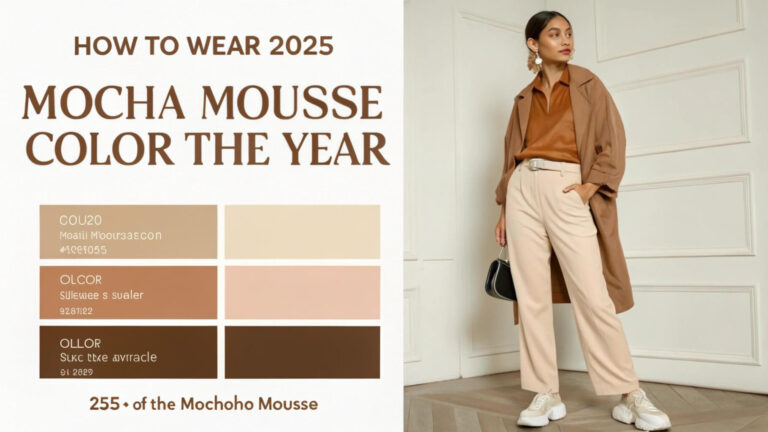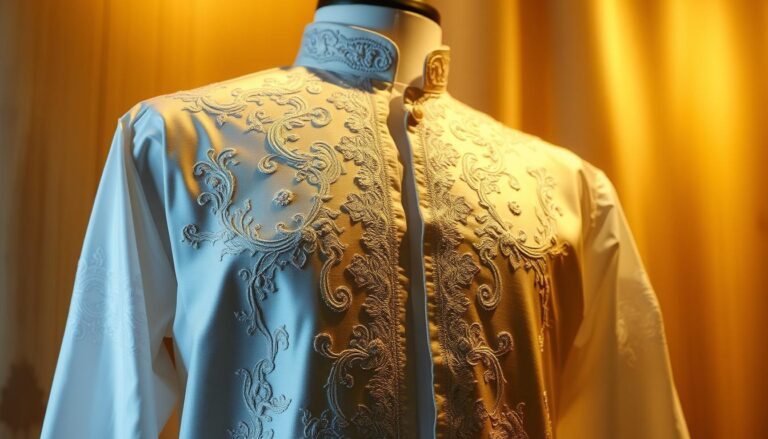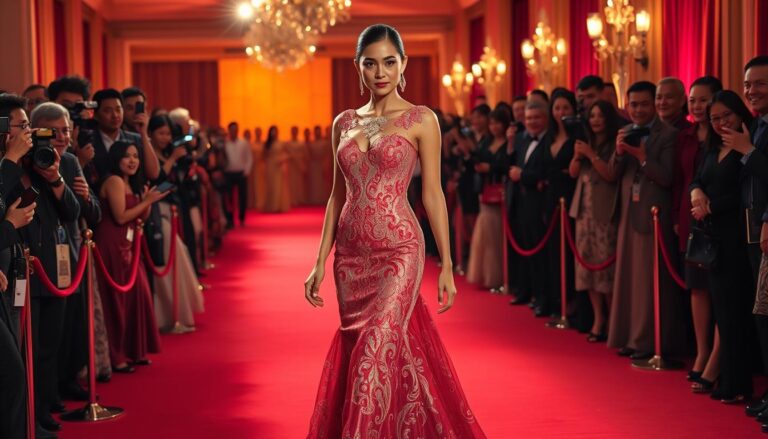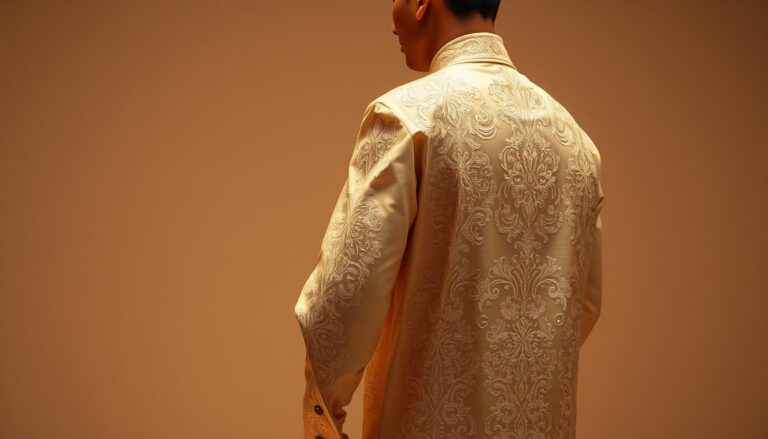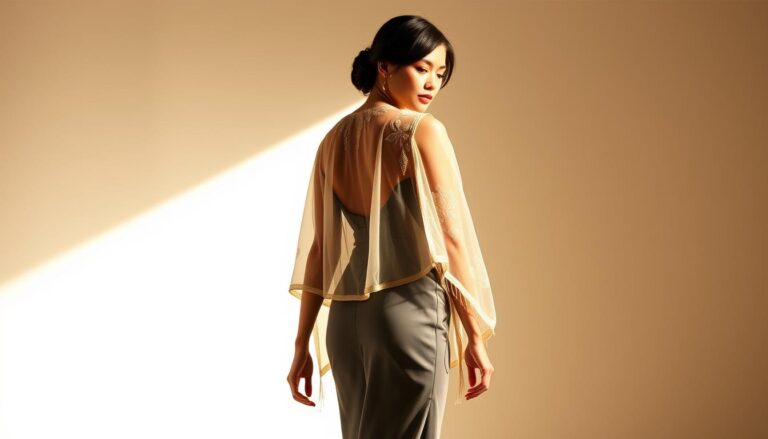Historical Barong Designs: Traditional to Contemporary
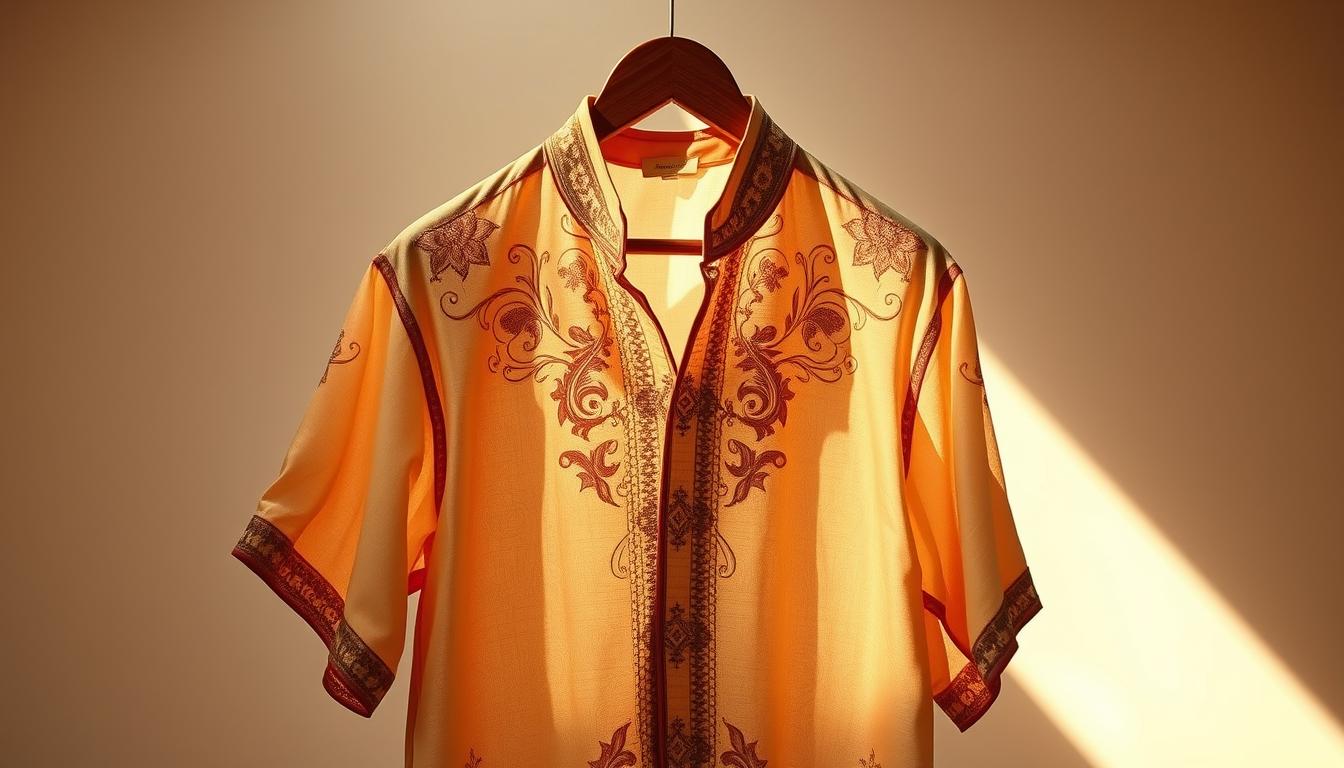
This piece of clothing has been a cultural cornerstone for over five centuries. Born from indigenous roots, it evolved through colonial influences to become a modern emblem of identity. Its journey reflects resilience and creativity, adapting to shifting eras while retaining its core significance.
Originally crafted from pineapple fiber in pre-colonial times, the garment blended practicality with artistry. Spanish rule introduced new fabrics like jusi and intricate embroidery styles. By the 20th century, it transformed into formal wear embraced by leaders and citizens alike, symbolizing unity and pride.
Today, this attire balances tradition with innovation. Designers experiment with colors and sustainable materials while honoring classic silhouettes. Whether worn at weddings or casual events, it remains a living link to the past—proof that heritage can thrive alongside progress.
Key Takeaways
- Rooted in pre-colonial craftsmanship using native fibers like abacá and piña
- Spanish influences added sheer fabrics and detailed embroidery techniques
- Became a national symbol of pride in the 20th century
- Adapts to modern fashion with diverse colors and blended materials
- Maintains relevance as versatile attire for formal and everyday use
Introduction to Historical Barong Designs
The Barong Tagalog stands as more than just clothing—it’s a cultural declaration stitched into fabric. Originating from the term “baro ng Tagalog” (dress of the Tagalog people), this garment combines practicality with artistry, tailored for men but embraced as a national symbol.
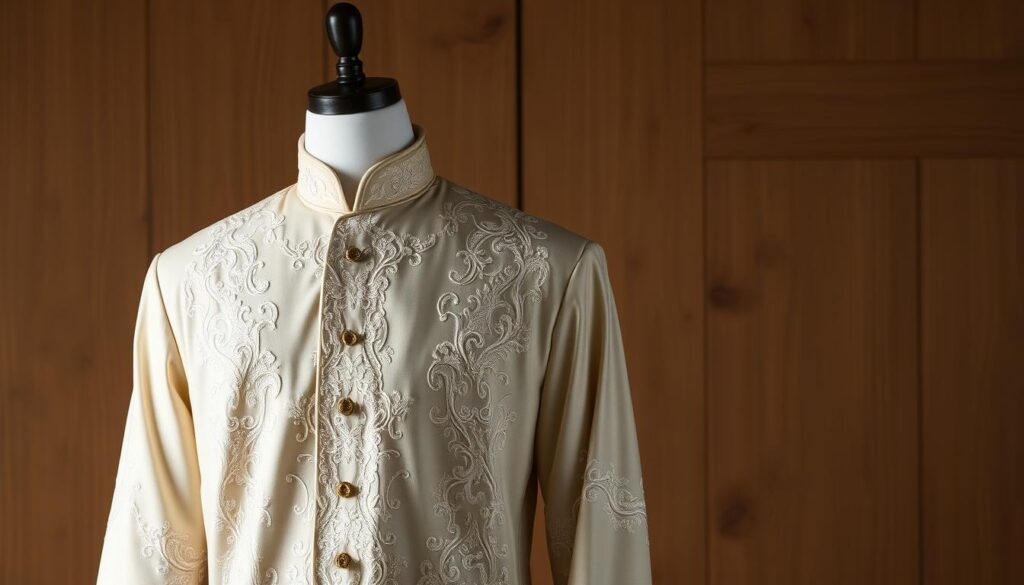
Definition and Overview of the Barong Tagalog
Woven from sheer fabrics like piña or jusi, the Barong Tagalog features delicate embroidery often inspired by nature. Its untucked silhouette—a hallmark since pre-colonial times—allows airflow in tropical climates while maintaining elegance. Unlike Western dress shirts, it’s designed as a standalone piece, eliminating the need for layers.
Historically, the baro (native shirt) varied by social class. Laborers wore plain cotton versions daily, while elites showcased intricate patterns for ceremonies. Today, it bridges tradition and modernity, worn at weddings, political events, and festivals alike.
Cultural and Historical Context
Spanish rule introduced collars and floral motifs, blending indigenous craftsmanship with colonial aesthetics. This fusion created a visual language of resistance and identity. As one historian notes:
“The Barong became armor—soft yet unyielding—against cultural erasure.”
Designated the Philippines’ national attire in 1975, it embodies pride across generations. From presidential inaugurations to overseas Filipino gatherings, its presence marks unity. Lightweight materials and hand-painted details ensure it remains timeless, proving heritage adapts without fading.
Origins in Pre-Colonial Culture
Long before colonial influences shaped its identity, the Barong Tagalog began as the baro—a collarless shirt woven into daily life. Crafted from rough cotton and native fibers like abacá, this garment prioritized function in the tropical climate. Its loose, untucked silhouette allowed airflow, while snug sleeves protected wearers during labor or travel.
Early Tagalog Garb and Indigenous Influences
The baro served as more than clothing—it was a social marker. Chiefs wore red-dyed versions, while everyday people opted for black or white. Weavers used early jusi (banana silk) to create breathable fabrics, blending durability with subtle texture.
Three key features defined pre-colonial design:
| Feature | Purpose | Material |
|---|---|---|
| Untucked silhouette | Enhanced airflow | Rough cotton |
| Close-fitting sleeves | Sun protection | Abacá fiber |
| Color coding | Status indication | Natural dyes |
Embroidery drew from nature—leaf patterns and geometric shapes told local stories. These motifs survived colonial rule, stitching indigenous pride into later Barong Tagalog designs. As one tribal elder’s saying goes:
“Threads carry memory; every stitch honors ancestors.”
By the late pre-colonial period, the baro had become a unifying dress code. Its evolution proves tradition adapts without losing roots—a lesson still woven into modern Filipino culture.
Spanish Colonial Influences and Transformation
Spanish rule reshaped Filipino attire through imposed dress codes and cultural fusion. Colonizers introduced European fashion elements like high collars and lace trims, forcing native garments to evolve. This era birthed a hybrid style—blending indigenous practicality with ornate colonial flair.
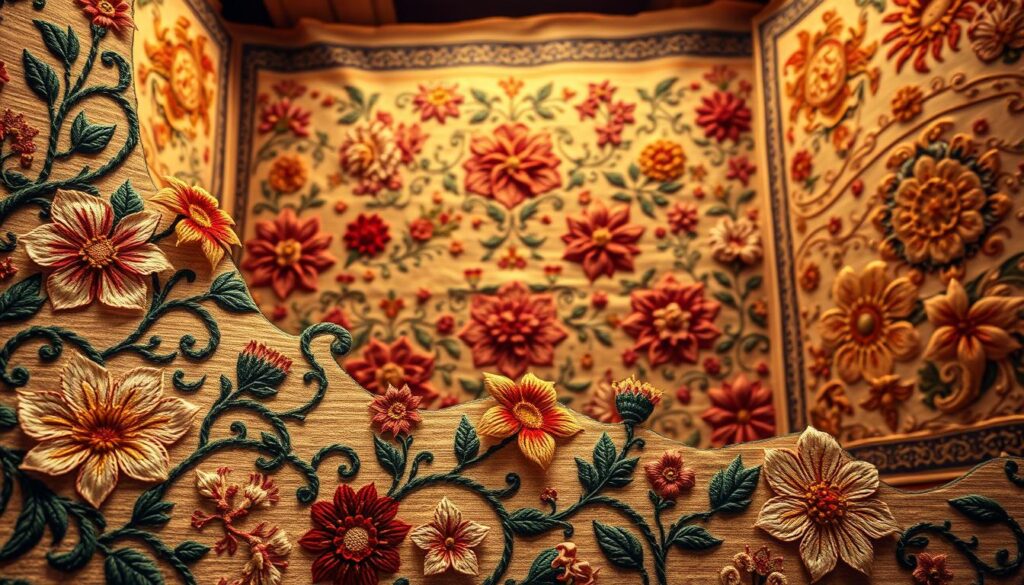
Transition from Native to Colonial Aesthetics
The simple baro gained structured silhouettes and closed necklines. Spanish priests mandated covered chests, leading to stiff collars that contrasted with earlier open designs. Three key changes emerged:
| Feature | Pre-Colonial Style | Colonial Adaptation |
|---|---|---|
| Collar | None | High, buttoned |
| Fabric | Rough cotton | Sheer piña/jusi |
| Silhouette | Loose | Tapered waist |
Elites adopted striped patterns and metallic threads, while laborers kept simpler cuts. These shifts mirrored social hierarchies under colonial control.
Symbolism and the Introduction of Embroidery
Needlework became a language of resistance. Local artisans hid indigenous motifs within floral embroidery commissioned by wealthy Ilustrados. As one 18th-century ledger notes:
“Gold thread purchased: 12 pesos. Pineapple cloth: 8 pesos. Pride in craft: priceless.”
Delicate stripes and geometric borders gained popularity, blending European symmetry with Filipino artistry. This decorative complexity turned garments into status symbols—a silent protest against cultural erasure.
By the 19th century, the fusion birthed distinct designs like the traje de mestiza, marrying Spanish formality with tropical adaptability. These innovations proved clothing could honor tradition while embracing change.
American Colonial Impact on Style and Usage
The early 20th century brought crisp collars and tailored cuts to Filipino wardrobes. American rule reshaped the barong tagalog, blending its flowing silhouette with structured Western styles. While suits dominated formal events, this garment adapted to survive—and thrive—through strategic reinvention.
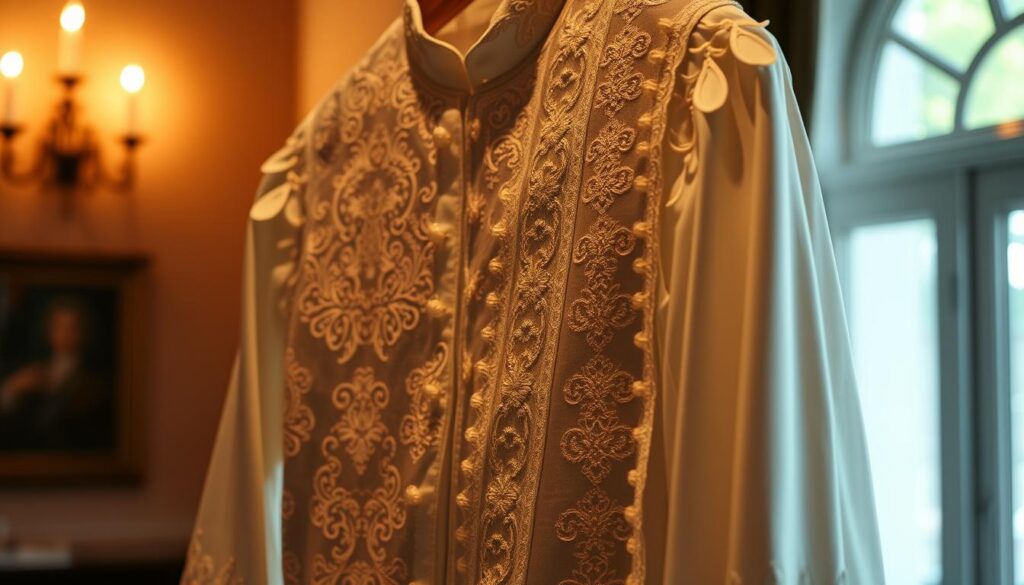
Adoption of Americana Elements
Tailors fused boxier cuts with the baro‘s breathable design. The commonwealth barong tagalog emerged as a patriotic hybrid, featuring embroidered Philippine and American flags on sheer jusi fabric. President Manuel Quezon popularized this style, pairing it with slim trousers for state functions.
Three key changes defined this era:
- Shorter hemlines for practical urban wear
- Hidden buttons replacing traditional tie closures
- Stiffer collars mirroring American dress shirts
Despite these updates, artisans preserved signature details. As Quezon noted in 1935:
“Our shirt remains untucked—like our spirit remains unbroken.”
New sewing techniques allowed mixed fabrics: piña sleeves with cotton bodies became common. The barong tagalog transitioned from everyday wear to ceremonial attire, its evolving style reflecting Filipinos’ nuanced relationship with colonial power. Through careful adaptation, it remained a canvas for cultural pride—stitched with resilience thread by thread.
The Modern Barong Tagalog: Revival and Innovation
Mid-20th century leaders transformed this garment into a political statement stitched with patriotism. Presidents like Ramon Magsaysay wore sharply tailored barong tagalog during pivotal moments, sparking renewed interest in the attire as more than ceremonial costume. Their choice turned it into a visual anthem for Filipino identity.
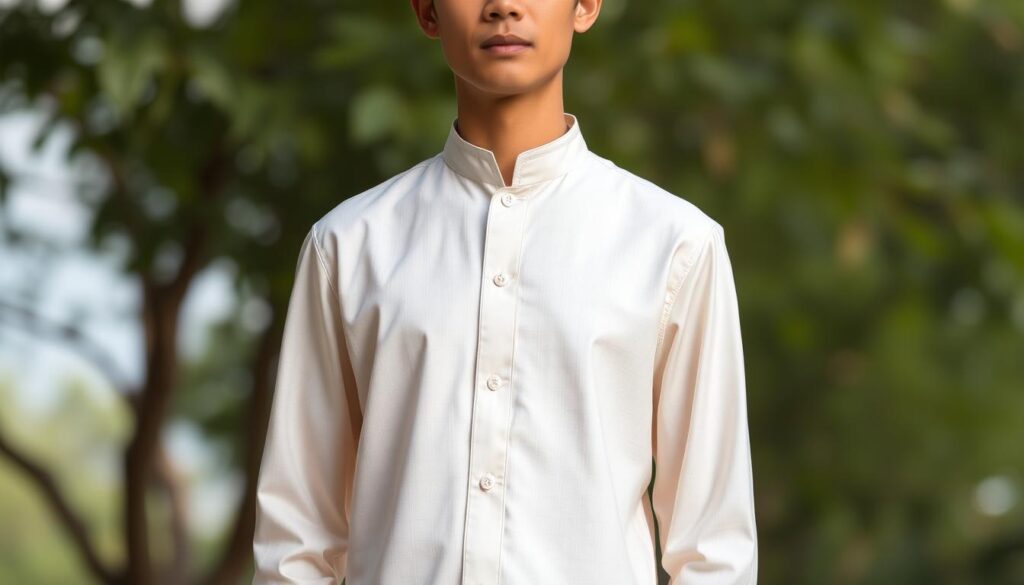
Presidential Influence on National Identity
When Ferdinand Marcos mandated the barong tagalog for official events in 1975, tailors reimagined its silhouette. Slimmer cuts replaced boxy shapes, while hidden pockets added functionality. State dinners and independence celebrations became runways for updated designs featuring minimalist embroidery—a shift from ornate colonial patterns.
Contemporary Adaptations and Design Trends
Today’s designers blend heritage with haute couture. Brands like Pineapple Industries pair traditional material like piña with recycled polyester, creating wrinkle-resistant versions for busy professionals. Casual iterations feature shorter hems and bold prints, worn untucked with jeans for weekend gatherings.
Three innovations define modern barong tagalog craftsmanship:
- Laser-cut patterns replacing hand-stitched embroidery
- Stretch fabrics for improved mobility
- Modular collars that snap on/off
At Paris Fashion Week 2022, a sheer black design with geometric threadwork demonstrated its global appeal. Yet as HABI textile advocates note:
“True innovation honors the loom’s rhythm while dancing to new beats.”
From boardrooms to protest marches—as seen in Rep. Teddy Casiño’s slogan-embroidered attire—this garment remains fluid. Its evolution proves tradition isn’t static but a conversation between generations.
Materials and Techniques: Fabric and Embroidery Traditions
At the heart of the garment’s elegance lies centuries-old weaving techniques. Skilled artisans transform natural fibers into breathable masterpieces, balancing delicate craftsmanship with practical needs. This section explores how material choices and decorative methods shape both form and cultural meaning.
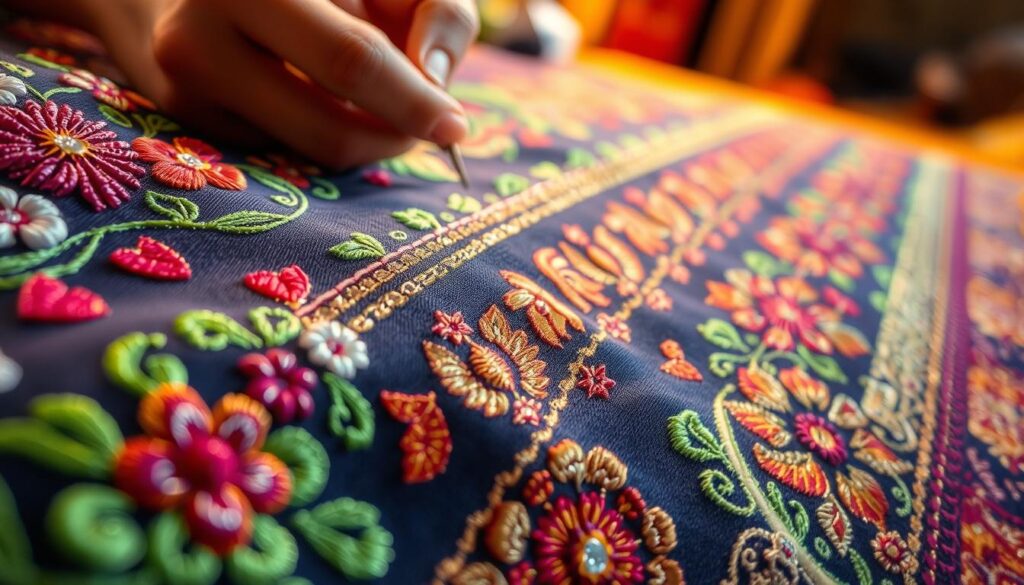
Traditional Fabrics: Piña, Jusi, and More
Piña fabric, made from pineapple leaves, creates a luminous texture prized for formal wear. Each strand undergoes weeks of hand-stripping and knotting—a process requiring precision. Jusi, originally woven from banana silk, offers lightweight durability with a subtle sheen.
These materials solved tropical climate challenges. Their sheer quality allowed airflow while maintaining modesty. As one master weaver explains:
“Pineapple fibers catch light like morning dew—no machine replicates that glow.”
Modern Material Substitutes and Production Techniques
Contemporary designers blend innovation with tradition. Organza and jusilyn mimic classic looks using polyester-silk mixes. These fabrics resist wrinkles better than delicate piña, appealing to busy wearers.
Three key differences define old and new methods:
| Aspect | Traditional | Modern |
|---|---|---|
| Production Time | 3-6 months | 2 weeks |
| Cost | $$$$ | $$ |
| Durability | High maintenance | Machine-washable |
Despite technological advances, hand embroidery remains irreplaceable for intricate patterns. Laser-cut alternatives gain popularity, but purists argue they lack the soul of needlework passed through generations.
Historical Barong Designs: Evolution of Form and Function
Every stitch and fold in this iconic garment carries centuries of adaptation. From its collar to cuffs, each element evolved to meet shifting needs while preserving cultural identity. Let’s explore how practical solutions became enduring style statements.
Signature Design Elements Across Eras
The collar tells a vivid story. Pre-colonial versions had none, but Spanish rule introduced stiff necklines to enforce modesty. Modern iterations feature convertible collars that snap off for casual wear. This blend of tradition and flexibility keeps the style relevant.
Sleeves transformed from snug workwear to fashion canvases. Early versions used tight cuffs for sun protection. Today’s tapered designs balance airflow with polished looks. The untucked front remains unchanged—a practical choice for humid climates that became a defiant cultural marker.
| Feature | Pre-Colonial | Colonial | Modern |
|---|---|---|---|
| Collar | None | High & starched | Convertible |
| Cuffs | Buttonless | French-style | Laser-cut |
| Front Embroidery | Minimal | Floral motifs | Geometric patterns |
Elaborate chest embroidery (pechera) once signaled wealth. Contemporary designers reimagined this space with invisible zippers and modular panels. As one Manila tailor notes:
“We now hide tech in tradition—a pocket for smartphones here, stretch fabric there.”
Patterns shifted from nature-inspired hand stitches to bold digital prints. Stripes once denoting social class now appear in rainbow hues for festivals. Through all changes, the core purpose remains: clothing that honors heritage while embracing progress.
Current Trends and Cultural Significance in the United States
Across American cities, the barong tagalog has become a mobile monument to Filipino pride. Urban communities blend tradition with streetwear, pairing embroidered shirts with slim trousers or layered under denim jackets. This cultural reset reflects both nostalgia and innovation.
Diaspora Fashion and Cross-Cultural Appeal
Filipino boutiques in Los Angeles and New York now offer ready-to-wear barong designs with adjustable collars and machine-washable fabrics. Cultural centers host sewing workshops, teaching second-gen Filipinos to customize heirlooms. As one Chicago designer notes:
“We’re coding heritage into every stitch—making it wearable for subway commutes and gallery openings alike.”
Three factors drive its popularity:
| Occasion | Styling | Material Innovation |
|---|---|---|
| Weddings | Gold-thread embroidery | Piña-silk blends |
| Streetwear | Cropped lengths | Organic cotton |
| Work Events | Hidden inner pockets | Wrinkle-free jusi |
Despite growing demand, sourcing authentic pieces remains challenging. Toronto’s Filipino district reports six-month waits for hand-stitched orders. Yet collaborations like Bode’s modern reinterpretations bridge this gap, merging traditional motifs with bold color blocking.
From NBA player warm-ups to college graduations, the tagalog barong tagalog now symbolizes diasporic identity in motion. Its threads weave together past and present—one wearable story at a time.
Conclusion
From humble baro to national treasure, this garment’s journey mirrors the Filipino spirit—adaptable yet rooted. Early versions wore baro simplicity, using pineapple fibers and open collars suited for tropical life. Colonial influences added intricate embroidery and structured silhouettes, transforming it into a canvas of cultural pride.
Modern fashion keeps the essence alive through innovation. Lightweight material blends with stretch fabrics, while laser-cut patterns update traditional motifs. Leaders like Ferdinand Marcos cemented its role in statecraft, proving attire could shape national identity.
Today’s barong tagalog thrives in boardrooms and backyard fiestas alike. Its breathable fabric and convertible collars suit both formal events and casual Fridays. Designers honor heritage by weaving history into every thread—whether through hand-stitched florals or eco-friendly dyes.
More than clothing, it’s a living archive. Each stitch whispers stories of resistance, reinvention, and resilience. As wearers button up its crisp collar, they don’t just dress—they embody centuries of craft meeting contemporary vision.

